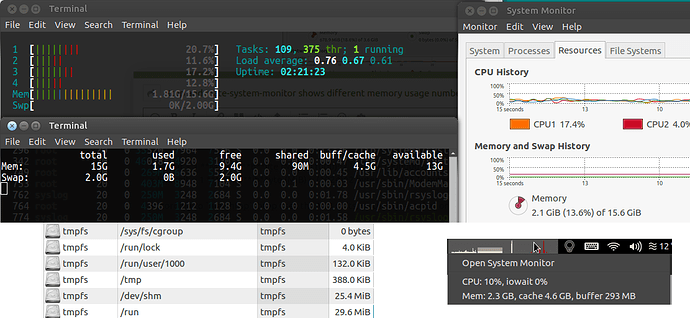

The default installation of atop will also start an atop daemon that writes snapshot information to a log file. Historical DataĪtop can clearly be helpful when a system appears to have performance issues, but what if the performance issues were in the past? A system that ran slowly overnight, but which is now performing well still needs diagnosis. Running atop in a full screen window may be helpful. More InformationĪtop is smart in that when it is run from a screen, it checks the size of the screen or terminal window and adjusts the number of columns displayed accordingly. Network usage requires the installation of a kernel module, netatop. Similarly, process can be sorted by memory usage ( m key), processor (CPU) usage ( p key) or network usage ( n key). There is a lot of data being read from the disks ( RDDSK), none written, and the four processes between them are keeping the disk 100% busy. Here, we can see that four copies of dd are running simultaneously. While atop is running, we can press d to sort the process list by disk I/O: If this system isn’t performing well right now, it would be worth investigating which processes are using the most disk I/O. However, when a system resource is in heavy demand, atop will highlight it in red: That’s a nice summary, but so far the functionality isn’t very far removed from the more familiar top command. Might be better, refreshing the display every 2 seconds. Ten seconds might be too long for the impatient system administrator, so # atop 2 When first run, atop shows a summary of activity since system boot, and then it refreshes every ten seconds to show a summary since the last refresh. atop has a curses interface that, by default, shows a summary of those four key resources (CPU, memory, disk I/O and network I/O), along with a list of processes sorted by CPU usage: atopĮnter atop, another tool which falls into the category of “best kept secrets”. What’s missing from that list is an overall view, a tool that can tell you which area would benefit from more analysis. There are a variety of tools that can look at each one of those resources in detail, including top, htop, iotop and iftop. In other words, if the disks are working flat out then it doesn’t matter how much memory you have available: the system performance will suffer. Good performance of a Linux system depends upon the availability of four key resources:Įach is limiting.


 0 kommentar(er)
0 kommentar(er)
